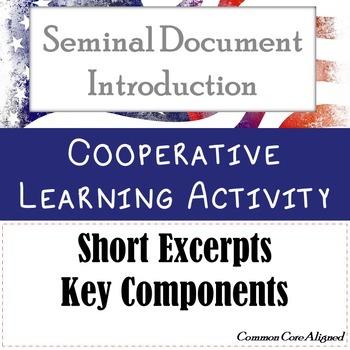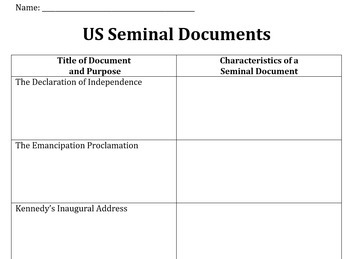Introduction to Seminal Documents
- Zip
Description
This cooperative learning seminal document lesson introduces the students to the definition, characteristics, and examples of seminal documents prior to reading full-text examples. This activity provides seven different excerpts of well-known seminal documents.
The students read, summarize, and identify key parts of each document using a jigsaw or other cooperative learning strategies. The key is to have students engaged in conversations in which demonstrate comprehension of the key components of a seminal document, which will allow for an easier transition once you start analyzing other seminal documents.
Suggestions for Customers:
•Earning Credit: Once you have downloaded and used a product, provide feedback. You can leave a quick rating and short comment. This will help you earn credit for future purchases, lowering the cost! I appreciate any feedback as it helps me grow as a professional and helps me determine which type of products you value in your classroom.
•Be in the know: If you want to know about any new products, discounts, or freebies, then click on the green star next to my store name. You will then become a follower and will receive email updates when these become available.
You may also like the following products:
Paraphrase versus Quoting Lesson
Summarizing Graphic Organizer(Free product)





